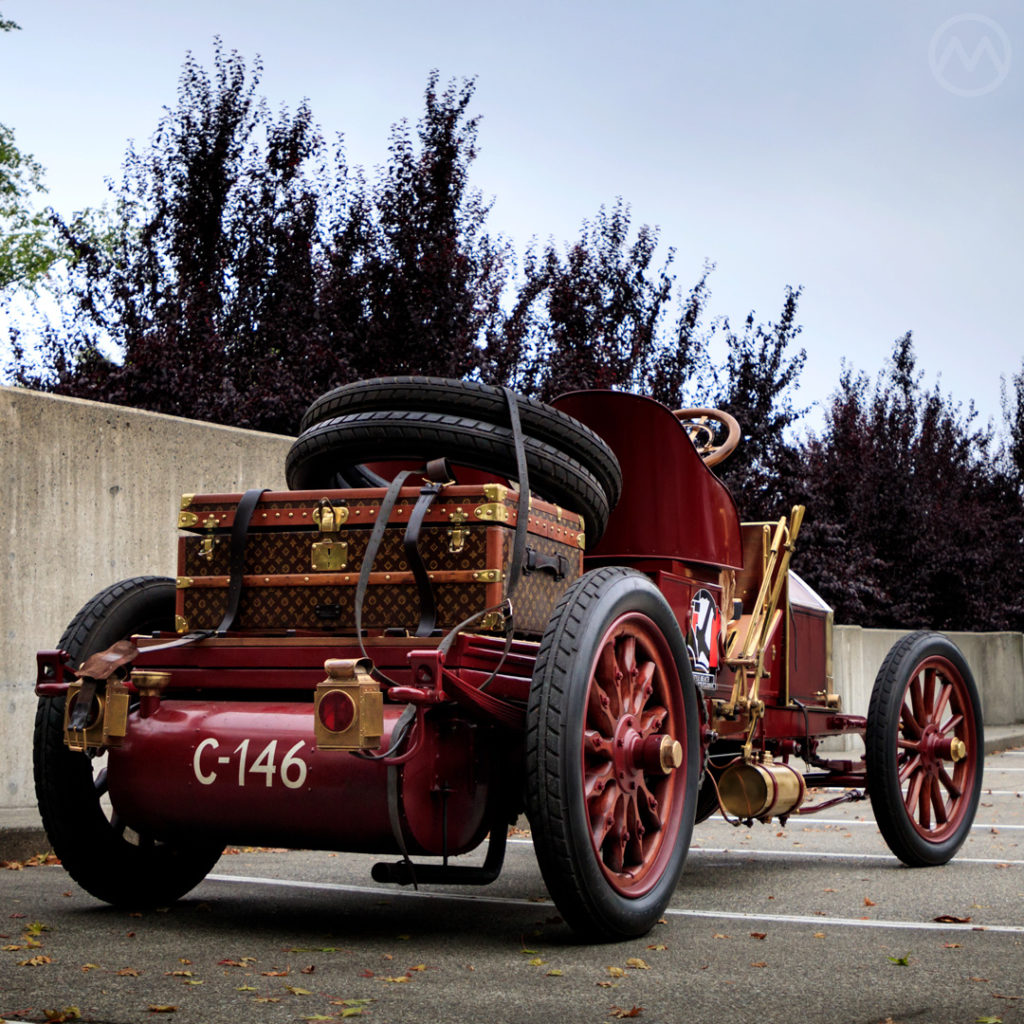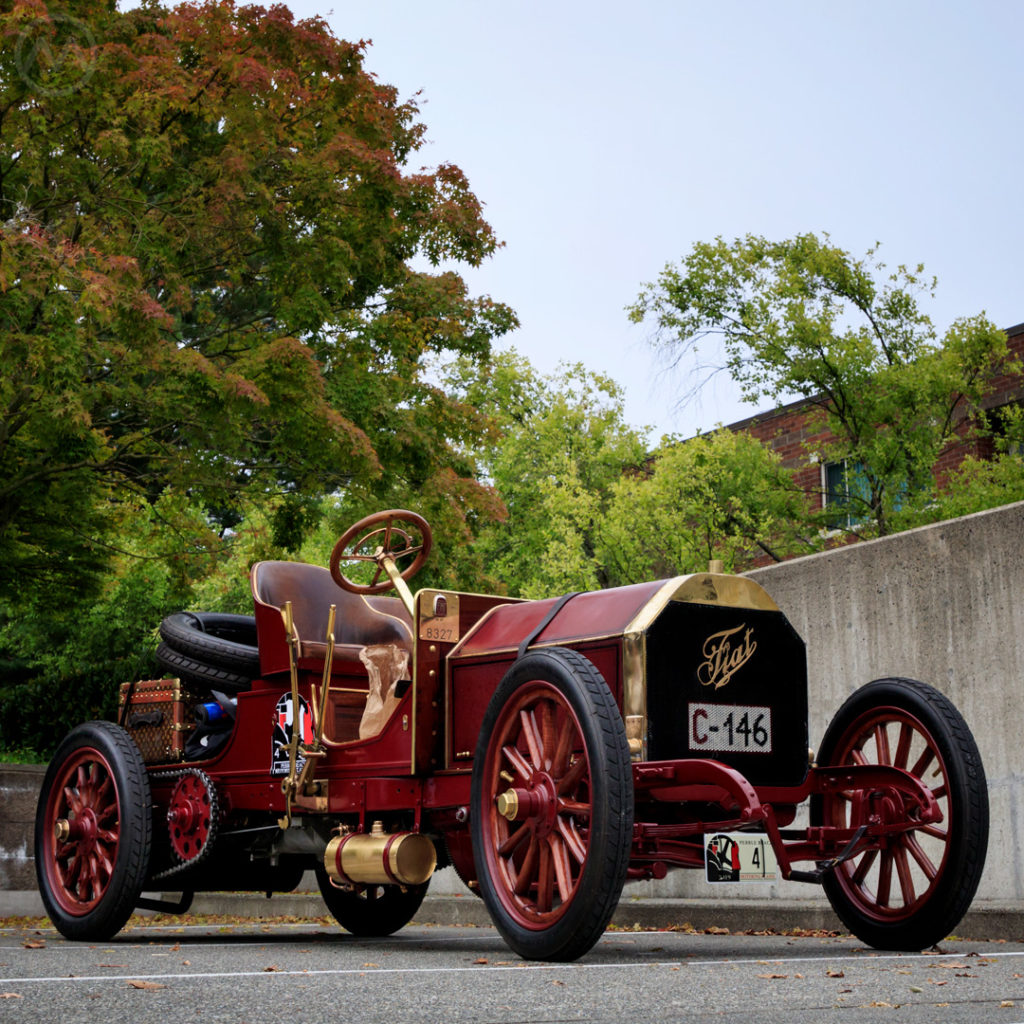It would be unusual for Fiat to take aim at Mercedes with a supercar today, but 1905 was a very different time. The mighty Fiat 60HP was aimed directly at Daimler and was one of the first real “supercars,” though again, the standards and definitions of 1905 were different. Unlike Fiats of later eras (even the rarely-seen luxurious ones), early Fiats were elite luxury machines.
F.I.A.T., as it was known then, was only six years old in 1905 but already dominated Italy’s tiny car industry. Company chief Giovanni Agnelli was busy diversifying F.I.A.T. into ball bearings, shipbuilding, aero engines, and other industrial ventures. These would balloon the company’s size and scope, but cars were the mainstay, and they’d been steadily improving too.
The story of F.I.A.T. begins with the Ceirano brothers (Giovanni Battista, Giovanni, Ernesto, and Matteo) and Giovanni Battista’s “Welleyes” bicycles, which were very popular in 1890s Italy.
They eventually hired Aristide Faccioli to design them a car. This was also successful, but quickly proved beyond their ability to reliably produce in what was basically a gigantic bike workshop.
Among their workers was a young Vincenzo Lancia, who has a further role in today’s tale.
The Ceiranos sell to Giovanni Agnelli
Unable to properly build the cars, they sold this original car and their patents to Giovanni Agnelli and a group of investors in the summer of 1899. “Fabbrica Italiana di Automobili Torino” was thus established with their first factory at Corso Dante in Turin.

Giovanni Battista stayed as a sales director for a little while, but quickly lost interest. The Ceiranos went on to found several Turinese carmakers, Itala, S.C.A.T., and S.T.A.R. They were also frequent racers in events like the Targa Florio.
By 1901 new chief engineer Giovanni Enrico and Agnelli’s teams were designing successors to the Ceirano-based cars and new T-head engines for them. The 60HP, however, was truly special. Enrico, a former civil engineer and steam and electric locomotive designer, would last at Fiat until 1906.
In 1903, F.I.A.T. began to cast off its early horseless carriages in favor of Enrico’s advanced new designs like the 16-20HP and 24-32HP models.
The Original Italian Supercar
None were more exotic than 1904’s mighty 60HP – packing a monstrous 10.6 liter four – aimed squarely at Daimler’s 9.3 liter 60.
The 60HP was an astoundingly expensive car even in the days when cars were only for the rich. The chassis alone cost $14,500 in 1904 – over $400K in 2019 dollars. This Quinby-bodied 1905 60HP was originally sold to August Anheuser Busch Sr.
Effectively the first “Italian Supercar,” the 60HP used a steel frame, where wood was still common practice. The car was specifically designed to be as at home in competition as it was being a luxury car – it was very fast for the time.
Busch’s car was luxury transportation, but the very same mechanical pieces were raced by Vincenzo Lancia, Louis Chevrolet, and Felice Nazzaro in events like the Vanderbilt cup.
F.I.A.T. in America
Most of them were sold to wealthy buyers abroad – F.I.A.T.’s U.S. agents were Hollander & Tangeman in New York. It was H&T that sold this car to Busch. In 1908, the pair started their own car company – Hol-Tan, with cars supplied by Moon Motor Car in St. Louis. Hol-Tan quickly fizzled, but they remained active in the lucrative importation of F.I.A.T.s.

Chassis 3003 came over in mid-1905 to be mated to a body by New Jersey’s Quinby, who specialized in lightweight but luxurious bodies – perfect for such a car. Newark-based Quinby was a long-time coachmaker with its roots in the pre-Civil War era.
Quinby itself nearly built electric cars in 1899 using components from Riker Electric Vehicles, but that proved too difficult to do. In 1902, Quinby engineer Herbert Strong invented a method for making composite aluminum-over-wood bodies. It was one of these that Busch chose for this car.
This, however, is not that body (though if you google this car, you’ll see what it looks like). The vehicle has two bodies – the original Quinby tourer and this racing body meant for distance use.
Busch kept his 60hp, chassis 3003, until his death in 1934, and it spent 77 years in the hands of three local collectors in Connecticut until 2012.
This car was meant to run in the 2019 Pebble Beach Motoring Classic but scrubbed at the last minute – it has, however, made the rounds to many concours and shows over the past decade, from Edinburgh to Pebble Beach.
Agnelli’s diversification efforts meant F.I.A.T. quickly dominated Italy’s industrial landscape – each venture allowing advantages in the other areas – metallurgy, engineering, finance.
The 60HP lasted into 1906 and was never properly replaced. It spawned a long line of monstrous Fiat racers, but it became harder and harder for a car to double as a front-line Grand Prix car and a luxury car as time went on.

